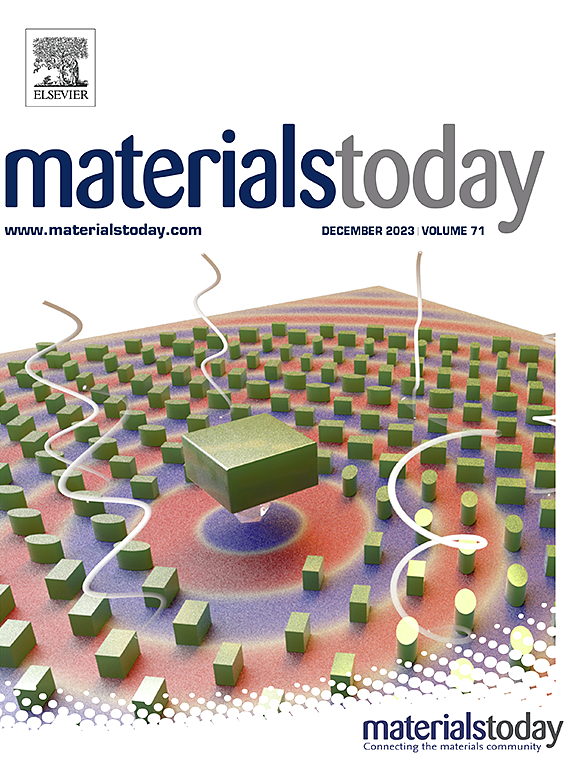Structural and functional tailoring of interfacial solar evaporators using 3D printing
IF 21.1
1区 材料科学
Q1 MATERIALS SCIENCE, MULTIDISCIPLINARY
引用次数: 0
Abstract
Interfacial solar steam generation (ISSG) technology has garnered increasing interest due to its sustainability in addressing the global water crisis. To date, various advanced solar evaporators with excellent photothermal properties and engineered structures have been widely developed to achieve highly efficient solar-to-thermal energy conversion and controllable water management, thus realizing high-efficiency solar steam generation. Recently, 3D printing, an emerging material processing technology, has gained significant attention in constructing solar evaporators. This is due to its unique advantages in building controlled complex microstructures, which has demonstrated great potentials in promoting the development of ISSG and improving the understanding of the structure–property relationship. In this review, we aim to summarize the key structural and functional design strategies towards 3D-printed solar evaporators with high-performance evaporation features, including solar absorption layer, thermal insulation layer, and water transportation channels. We also discuss methods to regulate thermal management and water management in ISSG systems. Additionally, the mainstream 3D printing technologies for fabricating solar evaporators are also reviewed, with an emphasis on choosing suitable printing methods and developing printable materials. Finally, we explore their multifunctional applications, analyze current challenges, and provide perspectives for further development in this field.

利用3D打印技术对界面太阳能蒸发器进行结构和功能定制
界面太阳能蒸汽发电(ISSG)技术因其在解决全球水危机方面的可持续性而获得了越来越多的关注。目前,各种具有优良光热性能和工程结构的先进太阳能蒸发器已被广泛开发,以实现高效的光热转换和水的可控管理,从而实现高效的太阳能蒸汽发电。近年来,3D打印作为一种新兴的材料加工技术,在太阳能蒸发器的建造中受到了广泛的关注。这是由于其在构建可控复杂微观结构方面的独特优势,在促进ISSG的发展和提高对结构-性质关系的认识方面显示出巨大的潜力。在本文中,我们旨在总结具有高性能蒸发特性的3d打印太阳能蒸发器的关键结构和功能设计策略,包括太阳能吸收层、保温层和水运通道。我们还讨论了在ISSG系统中调节热管理和水管理的方法。此外,还综述了制造太阳能蒸发器的主流3D打印技术,重点介绍了选择合适的打印方法和开发可打印材料。最后,我们探讨了它们的多功能应用,分析了当前的挑战,并对该领域的进一步发展提出了展望。
本文章由计算机程序翻译,如有差异,请以英文原文为准。
求助全文
约1分钟内获得全文
求助全文
来源期刊

Materials Today
工程技术-材料科学:综合
CiteScore
36.30
自引率
1.20%
发文量
237
审稿时长
23 days
期刊介绍:
Materials Today is the leading journal in the Materials Today family, focusing on the latest and most impactful work in the materials science community. With a reputation for excellence in news and reviews, the journal has now expanded its coverage to include original research and aims to be at the forefront of the field.
We welcome comprehensive articles, short communications, and review articles from established leaders in the rapidly evolving fields of materials science and related disciplines. We strive to provide authors with rigorous peer review, fast publication, and maximum exposure for their work. While we only accept the most significant manuscripts, our speedy evaluation process ensures that there are no unnecessary publication delays.
 求助内容:
求助内容: 应助结果提醒方式:
应助结果提醒方式:


